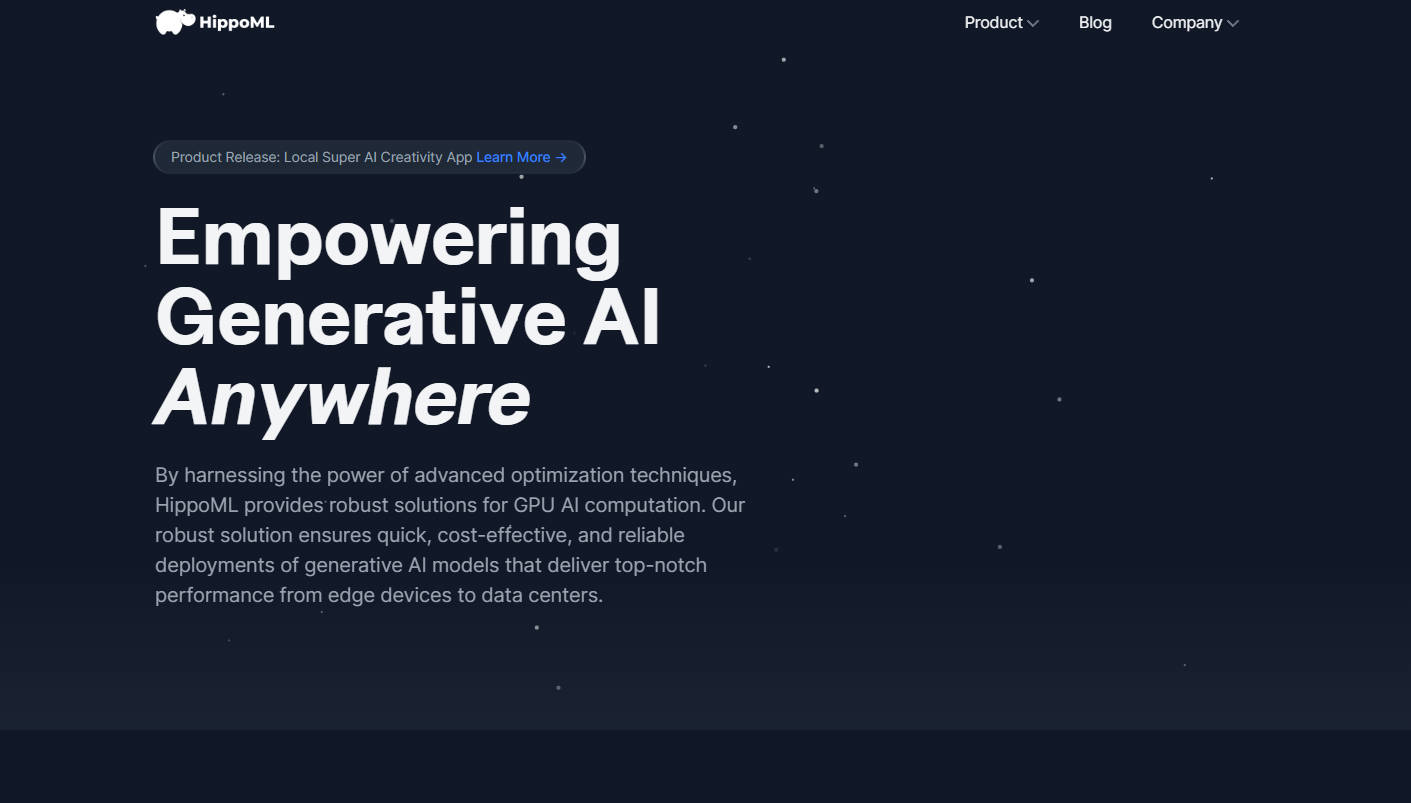
What is HippoML?
HippoML Inc. empowers generative AI across diverse platforms, offering optimized solutions for GPU AI computation. Leveraging advanced optimization techniques, HippoML ensures swift, cost-effective, and reliable deployment of generative AI models, delivering unparalleled performance from edge devices to expansive data centers.
Key Features:
🚀 AI Computation, Fully Optimized: HippoML supports all modern AI models crucial for diverse products, seamlessly compatible with NVIDIA, AMD, and Apple GPUs.
💡 Performance Optimized: By employing Model-System-Hardware co-design, HippoML pushes performance boundaries, maximizing potential and efficiency.
🛠️ Deployment Optimized: HippoML offers Docker images complemented by REST API or bare metal C++/Python SDK, delivering up to a 100X speed boost in minimizing cold start latency.
Use Cases:
Enhanced Visual Content Creation:Creative professionals can leverage HippoML to refine images, convert text to images, and perform real-time image editing, fostering seamless content generation and enhancement workflows.
Efficient AI Model Development:Research institutions and AI developers benefit from HippoML's optimized AI computation, accelerating model training and experimentation across diverse GPU platforms, leading to faster insights and breakthroughs.
Scalable Production Deployment:Enterprises deploying AI-driven applications can rely on HippoML for efficient deployment, leveraging Docker images and SDKs for streamlined integration and performance optimization across varied hardware environments, ensuring scalable and reliable operations.
Conclusion:
HippoML Inc. stands at the forefront of generative AI innovation, offering optimized solutions tailored for diverse computational needs. Experience swift, efficient, and reliable AI computation across GPU platforms with HippoML. Join us in unlocking the full potential of generative AI, from edge devices to expansive data centers.
FAQs:
What AI models does HippoML support?HippoML supports a wide range of modern AI models crucial for various applications, ensuring compatibility with NVIDIA, AMD, and Apple GPUs for versatile usage.
How does HippoML optimize performance?HippoML employs Model-System-Hardware co-design to push performance boundaries, maximizing efficiency and potential across diverse AI computation tasks.
What deployment options does HippoML offer?HippoML provides Docker images paired with REST API or bare metal C++/Python SDKs, offering flexibility and scalability in deploying generative AI models with up to a 100X speed boost in minimizing cold start latency.
More information on HippoML
Top 5 Countries
Traffic Sources
HippoML Alternatives
HippoML Alternatives-

Create stunning vector illustrations directly within Figma using the Hippo Figma plugin. Enhance your designs effortlessly with powerful AI transforms.
-

Supercharge your generative AI projects with FriendliAI's PeriFlow. Fastest LLM serving engine, flexible deployment options, trusted by industry leaders.
-

Deploy enterprise GenAI securely on your private data. H2O.ai offers sovereign, compliant AI on-prem, air-gapped, or in your cloud.
-

Discover Hippocrates, the cutting-edge healthcare LLM surpassing GPT-4 in performance. Assisting professionals, empowering patients, and advancing research. Revolutionizing healthcare with safety, reliability, and empathy.
-

OctoAI is world-class compute infrastructure for tuning and running models that wow your users.

